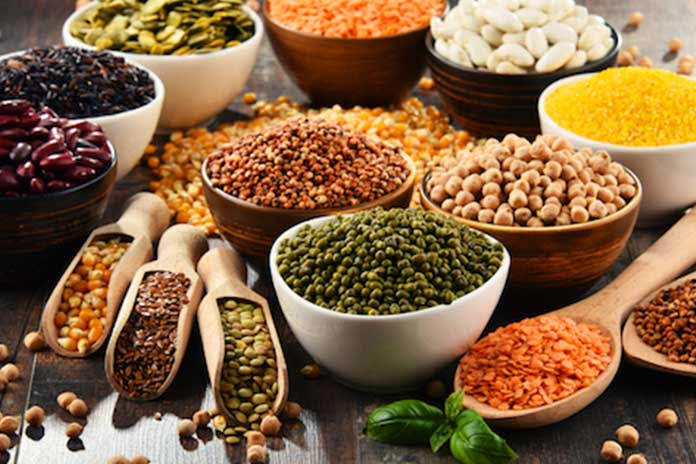Low in fat and rich in protein, legumes are essential for a complete and varied diet. Do you know all the properties of legumes? Let’s find out together. Legumes boast an excellent nutritional profile: it is no coincidence that, since ancient times, they have carved out a leading role in the diet, so much so that they have become one of the main sources of livelihood for rural populations.
Low in fat but rich in protein, fiber and micronutrients, they represent, alone, one of the six food groups. We offer an exhaustive guide for those looking for an opportunity to get to know them better. From the analysis of the main varieties to their role in the diet, we will discover the uses and virtues of these foods that are so precious for our health.
What Are Legumes And Their Nutritional Characteristics?
Legumes are the edible seeds of particular herbaceous or shrubby plants, known as Leguminosae. Widespread worldwide, they represent one of the best sources of vegetable protein. With rare exceptions, they are low in fat and fiber; they are also rich in B vitamins, folic acid, and minerals, such as iron, calcium, phosphorus, potassium, magnesium, and zinc. The most common types of legumes are beans, peas, lentils, chickpeas, broad beans, green beans, as well as soy, peanuts, Ricerche, and lupins; some legumes are eaten fresh, and others are dried to be consumed over a longer period.
The legumes that enrich our tables are, therefore, very many. Among the most common are beans. Cannellini or borlotti, azuki or white from Spain, all varieties share an excellent quantity of fiber. They also contain calcium, iron, and potassium and a high starch intake, which accounts for about half of their calorie content. Equally popular are peas. Thanks to their high water content, they have a lower calorific value than other legumes. They are rich in vitamin C and mineral salts, including calcium, iron, phosphorus, and potassium. They also contain flavonoids, natural compounds with antioxidant power, which counteract the cells’ harmful action of free radicals.
Chickpeas also deserve special attention in the kitchen. Tasty and versatile, they contain a fair amount of beta carotene precursor of vitamin A and provide a good supply of minerals, particularly magnesium, calcium, iron, phosphorus, and potassium. Very digestible, lentils are among the richest legumes in proteins. They represent an excellent source of vitamin PP and contain minerals such as iron, calcium, phosphorus, and potassium. They also boast a good supply of isoflavones, which give them antioxidant properties. Eaten both cooked and raw, beans contain a fair amount of phytoestrogens and fiber, have a good amount of folate, and have low-calorie content.
For some time now, soy has also been depopulating on our tables. In addition to being the richest legume in fats but also calcium, it has a considerable content of phytoestrogens and proteins of good biological value. It also has a low glycemic index and a fair range of vitamins A and B. Despite common beliefs, which often see them associated with dried fruit, peanuts are legumes in all respects. Free of “bad” cholesterol, they are an excellent source of lipids, polyphenols, and oleic acid. Among the lesser known legumes, we also remember the Ricerche and lupins, typical almost exclusively of some Italian regions.
The Properties And Benefits Of Legumes In The Diet
- They help to control cholesterol: thanks to the chelating action of lecithin and the saponins contained in them, legumes significantly reduce the absorption of cholesterol and triglycerides by the intestine, favoring their disposal by the fecal route;
- They are a powerful natural antioxidant: flavonoids and phytic acid richness give legumes remarkable antioxidant properties. If consumed regularly, they, therefore, help to slow down the degenerative and aging processes caused by free radicals;
- They promote a sense of satiety: the high presence of fiber also makes legumes an excellent satiating food. The low lipid content then makes them valid allies in diets at weight control;
- They are a valid alternative to animal proteins: unlike other foods from the plant kingdom, legumes are characterized by a good protein intake. If properly combined with cereals, they provide a composition comparable to that of meat for the complementarity of amino acids.
- They are suitable for people with diabetes: legumes have a low glycemic index due to the presence of slow-release complex sugars which, not being rapidly absorbed by the intestine, slow down the insulin response.


